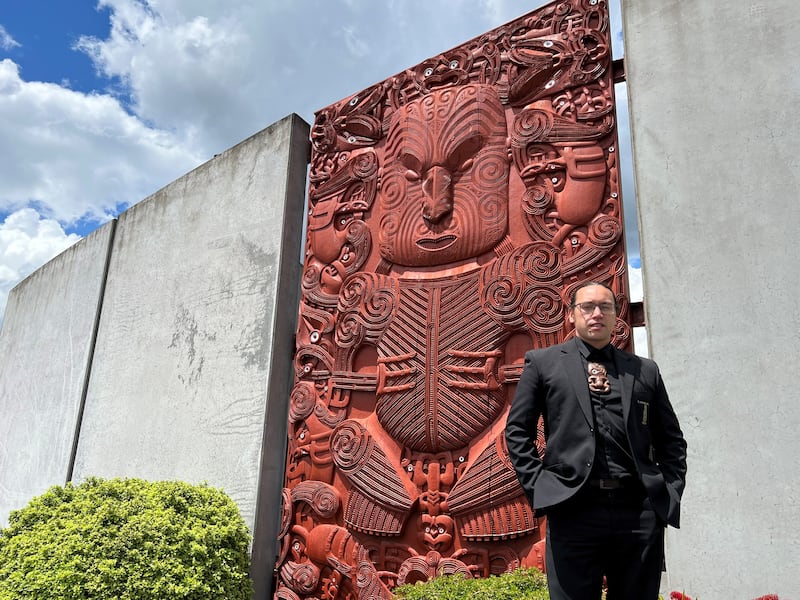Te Puia, New Zealand Māori Arts & Crafts Institute (NZMACI) has appointed a new head of its prestigious wood carving school, to coincide with the 60 year anniversary, since its founding under the New Zealand Māori Arts and Crafts Institute Act.
Grant Hamarama Smith Marunui was welcomed with a whakatau to honor his new role as Tumu Whakairo Rākau, Wednesday.
NZMACI’s General Manager, Eraia Kiel, remarked on the progression of Marunui, a 2014 graduate of the institute, saying,
“Grant brings another āhua to whakairo rākau. He is a humble young man and a highly talented individual.”
“He’s been able to branch out from NZMACI and acquire some new skills and knowledge that he’ll bring back to the wānanga.” she added.
Marunui is praised not only for his skill but also for his potential to influence NZMACI’s future, with Kiel affirming, “He has the mana and respect from his peers.”
The generational torch is being passed, with Marunui stepping into the shoes once filled by his mentors Albert Te Pou, James Rickard, and Clive Fugill.
“With the support of my masters who taught me, I intend on supporting our pouako and tauira however I can, to ensure that we continue to maintain the high level of carving that our masters set for us.” he said.
Marunui has left his mark on the landscape of NZMACI through substantial projects, including the three pou whakairo gracing the exterior of the institute—emblematic carvings weighing 2300kg each, and rising 7 metres high.
Carved from tōtara, each pou recognises a prominent carving style from the Te Arawa tribal area as examples of the finest works from Ngāti Whakaue, Ngāti Pikiao and Ngāti Tarāwhai.
His collaborative work with Albert Te Pou on the kauri waharoa also stands as a testament to his craftsmanship, according to Kiel. “That speaks a lot about who he is and the mana of the man – it’s very fitting to now have him return and take on this highly prestigious position,”
His recent works with CNI Iwi Holdings Ltd, Rotorua Lakes Council, and Kānoa - Regional Economic Development & Investment Unit, for Kūwaha and three Pou on Tītokorangi Drive share the whakapapa, genealogical histories of Ngāti Hurungaterangi, Ngāti Taeotu, Ngāti Te Kahu (Ngā Hapū e Toru o Ngāti Whakaue), tangata whenua of Tītokorangi. Kiel expresses pride, saying their carvings are “the hallmark of NZMACI.”
“When you see Grant’s work, you know straight away that’s NZMACI,” Kiel asserts, and ties Marunui’s ethos to the Māori proverb: “He toi whakairo, he mana tangata.”
This new chapter in Marunui’s career aligns with a historical moment for NZMACI, marking 60 years since its founding act and recognizing the 2020 legislative shift to iwi ownership.
The 60-year-old vesting act saw the Rotorua institution as the steward of the national schools of wood carving, weaving, and much of Toi Māori more generally, with the mandate to promote Te Ao Māori through education and craftsmanship.
Beyond its educational role, it’s also tasked with demonstrations, exhibitions, and tours of toi Māori and toi whakaari Māori (performing arts), as well as ensuring the sustainable development of the region’s cultural and tourist attractions.

